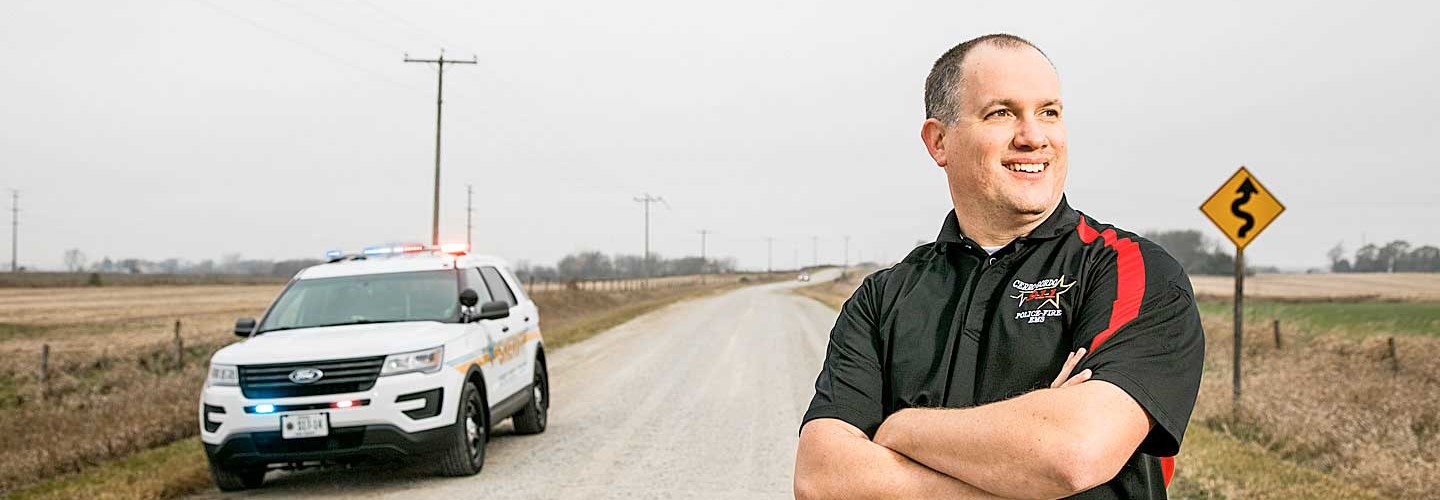In-Vehicle Mobile Hotspots Give First Responders Fast Connectivity in the Field
Applications for Wi-Fi keep getting better. The ubiquitous technology that has reshaped office work and personal lives is now available in vehicles to make government field workers more productive.
And whether used for traditional police work, running a public-transit system or providing backup communications to first responders, officials say that in-vehicle mobile gateways with Wi-Fi help field teams work smarter.
Take the Cerro Gordo County (Iowa) Sheriff’s Department, for example. After installing mobile gateways with Wi-Fi in its police cars, the county reports that the technology has streamlined crime investigations.
About a week after the county deployed the mobile gateways in its public safety vehicles, a deputy investigating a suspicious death took 40 photographs with his tablet and immediately uploaded them to the county’s case management system from the crime scene via Wi-Fi, says Andy Flagge, network administrator for the county.
“That could not have happened without Wi-Fi connectivity from the car,” says Flagge, who adds that deputies spent too much time battling connectivity issues in the past, when they used cellular modems. Depending on coverage, it could take deputies five to 10 minutes to connect to the network when using the modems.
Number of feet of Wi-Fi coverage around a vehicle provided by the mobile gateway
All that has changed since Flagge deployed Sierra Wireless’ InMotion onBoard Mobile Gateways (oMGs), which provide persistent Wi-Fi access over a 4G network inside vehicles. In addition, the county rolled out 12-inch ruggedized tablets from Xplore Technologies and a new computer-aided dispatch system. “The Xplore tablets gave us units that are touch screen-friendly, plus they can support our new dispatch applications,” Flagge says.
The mobile gateways take the county’s Verizon cellular signal and retransmit it as a Wi-Fi signal, providing a 200-foot perimeter of coverage around the vehicles. “I’ve really been taken aback by how well they’ve worked,” Flagge says.
Cerro Gordo County can also use the wireless connection to stream global positioning system data to the cars, providing the dispatchers with more precise location coordinates.
“In the past, we had to put a separate GPS antenna on the patrol cars, and it became very expensive taking the cars into the radio shop every time an antenna went down,” Flagge says.
Getting Improved Service in the Field
State and local governments also use mobile access routers for electronic metering and other transportation applications, says Eric Hanselman, chief analyst for 451 Research. “Municipalities are always looking for a return on investment with any technology project, so they’re more apt to use them where they can generate some kind of revenue stream or cost savings,” he notes.
The factor of increase in bandwidth speed offered by 4G networks compared with 2G
SOURCE: Mobile Future, “Mobilizing America: Accelerating Next Generation Wireless Opportunities Everywhere,” Sept. 8, 2015
The Denver Regional Transportation District relies on oMG mobile routers to enhance communications for dispatchers and drivers, says Tom Hughes, manager of intelligent transportation systems for RTD. At the end of a driver’s shift, the agency transmits smart-card data from an in-vehicle computer to RTD’s central computer system via Wi-Fi in the bus garage. RTD also pulls video footage to use for accident and incident investigations.
Using the computer-aided dispatch system, dispatchers can now text drivers about construction detours or traffic jams. And the dispatchers can send route information to new drivers or a person filling in for someone if they are sick or on vacation.
“The service development people also make great use of the data that’s transmitted via Wi-Fi to our central computers,” Hughes says. “They can analyze how long it takes the buses to travel certain routes so we can make adjustments and pinpoint the best possible schedules.”
The oMG devices offer a drastic improvement over the RTD’s old 9600-baud network, Hughes adds. “There’s really no comparison,” he says. “Now we have a modern communication system that makes the entire operation more productive.”
Enabling Emergency Response
Mobile gateways can also aid emergency response in the event of a hurricane, flood or other natural disaster. The Alabama Emergency Management Agency outfitted regional communication trucks with Cradlepoint mobile gateways to support first responders, says IT Director Jeb Hargrove.
Because traditional communication lines typically fail during a natural disaster, first responders need additional communication links.
The Cradlepoint gateways each link to two cellular providers and backup satellite communications. Generally, the gateways share bandwidth between the two cellular connections. If a line goes down or is unavailable, the Alabama Emergency Management Agency uses the satellite link for redundancy.
“One of the big differences with the Cradlepoint device is we can stream live video to headquarters from the scene,” Hargrove says. “Now all the decision-makers can see what’s happening firsthand. It’s really improved our situational awareness.”








